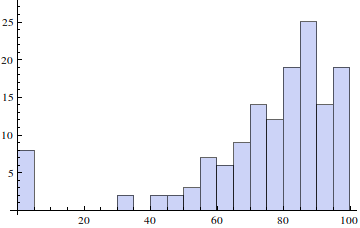A Frog Puzzle
I stumbled upon a TED-Ed video with a frog puzzle:
You’re stranded in a rainforest, and you’ve eaten a poisonous mushroom. To save your life, you need an antidote excreted by a certain species of frog. Unfortunately, only the female of the species produces the antidote. The male and female frogs occur in equal numbers and look identical. There is no way to distinguish between them except that the male has a distinctive croak. To your left you spot a frog on a tree stump. You hear a croak from a clearing in the opposite direction, where you see two frogs. You can’t tell which one made the sound. You feel yourself starting to lose consciousness, and you realize that you only have time to run in one direction. Which way should you go: to the clearing and lick both frogs or to the tree stump and lick the stump frog?
My first thought was that male frogs croak to attract female frogs. That means the second frog in the clearing is probably an already-attracted female. The fact that the stump frog is not moving means it is male. I was wrong. This puzzle didn’t assume any knowledge of biology. The puzzle assumes that each frog’s gender is independent from other frogs. Thus this puzzle is similar to two-children puzzles that I wrote so much about. I not only blogged about this, but also wrote a paper: Martin Gardner’s Mistake.
As in two-children puzzles, the solution depends on why the frog croaked. It is easy to make a reasonable model here. Suppose the male frog croaks with probability p. Now the puzzle can be solved.
Consider the stump frog before the croaking:
- It is a female with probability 1/2.
- It is a croaking male with probability p/2.
- It is a silent male with probability (1-p)/2.
Consider the two frogs in the clearing before the croaking:
- Both are female with probability 1/4.
- One is a female and another is a croaking male with probability p/2.
- One is a female and another is a silent male with probability (1-p)/2.
- Both are silent males with probability (1-p)2/4.
- Both are croaking males with probability p2/4.
- One is a silent male and another is a croaking male with probability p(1-p)/2.
The probabilities corresponding to our outcome—a non-croaking frog on the stump and one croaking frog in the clearing—are in bold. Given that the stump frog is silent, the probability that it’s a female is 1/(2-p). Simillarly, given that one clearing frog croaked, the probability that one of them is a female is 1/(2-p). The probabilities are the same: it doesn’t matter where you go for the antidote.
The TED-Ed’s puzzle makes the same mistake that is common in the two-children puzzles. I don’t want to repeat their incorrect solution. The TED-Ed’s frog puzzle is wrong.
(The calculation in the second to last paragraph was corrected on Nov 13, 2021.)
Share: